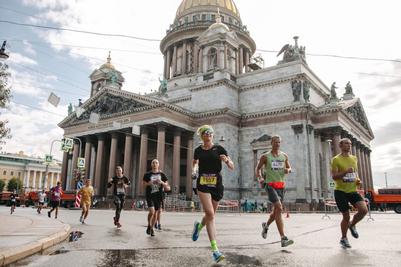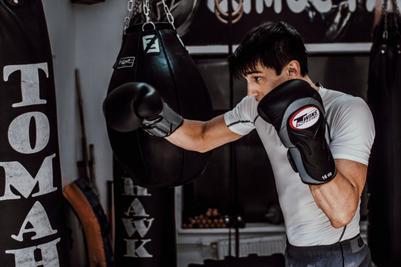Ultramarathoners told how the first "hundred" turned their lives upside down.
Such a mileage seems to many to be just madness, and not everyone decides on it. Ultramarathoners who overcome the "hundred", and I want to call them supermen at all. They run without exaggeration for half a day, under the scorching sun, rain, wind…
The finish often bears fruit. Starting from self-pride and ending with an interesting acquaintance that can grow into the love of a lifetime. Today we will tell you two stories of experienced runners about their first 100 km.

Alexander Elkonin
ultramarathoner, founder of the ERA running club
A long time ago, in the late 90s, I discovered that my rectus abdominis muscles diverge, as it happens in late pregnancy. I didn't want to live with a belly that hangs over my trouser belt at all, so I had to take measures: "cut the ration, raise the production rate."
Calorie restriction and regular physical activity — you can't think of anything else for weight loss, and the most affordable load is running. That's how I started running. That is, I ran before, but then running became a systematic activity, at least six times a week, for 25-30 minutes in the morning.
And in the summer of 2005, a friend began to tempt me to run a marathon, they say, there is nothing special about it, just bring the weekly mileage to 50-70, run 30 km for training, and everything will work out. I believed it and in September of the same year I ran a marathon in Moscow.
I ran painfully, everything hurt, but all this most difficult hour I was in high spirits, because I understood that I would definitely run and that I would run again.
Then there were more marathons and starts at shorter distances. And the results gradually improved, and the training process gained structure and order, and running 30 km over the hills in Krylatskoye or on the ski track in Romashkov became commonplace.
And then Sergey Pchelyakov, my teammate, with whom we trained a lot together, began to talk about running competitions in the mountains, along trails, at some incredible distances for me - 50, 80, 100, 160 km. He went to Europe for a couple of such starts, and the whole community followed his marks online at the intermediate points of the 100-kilometer distance from Italian Courmayeur to French Chamonix.
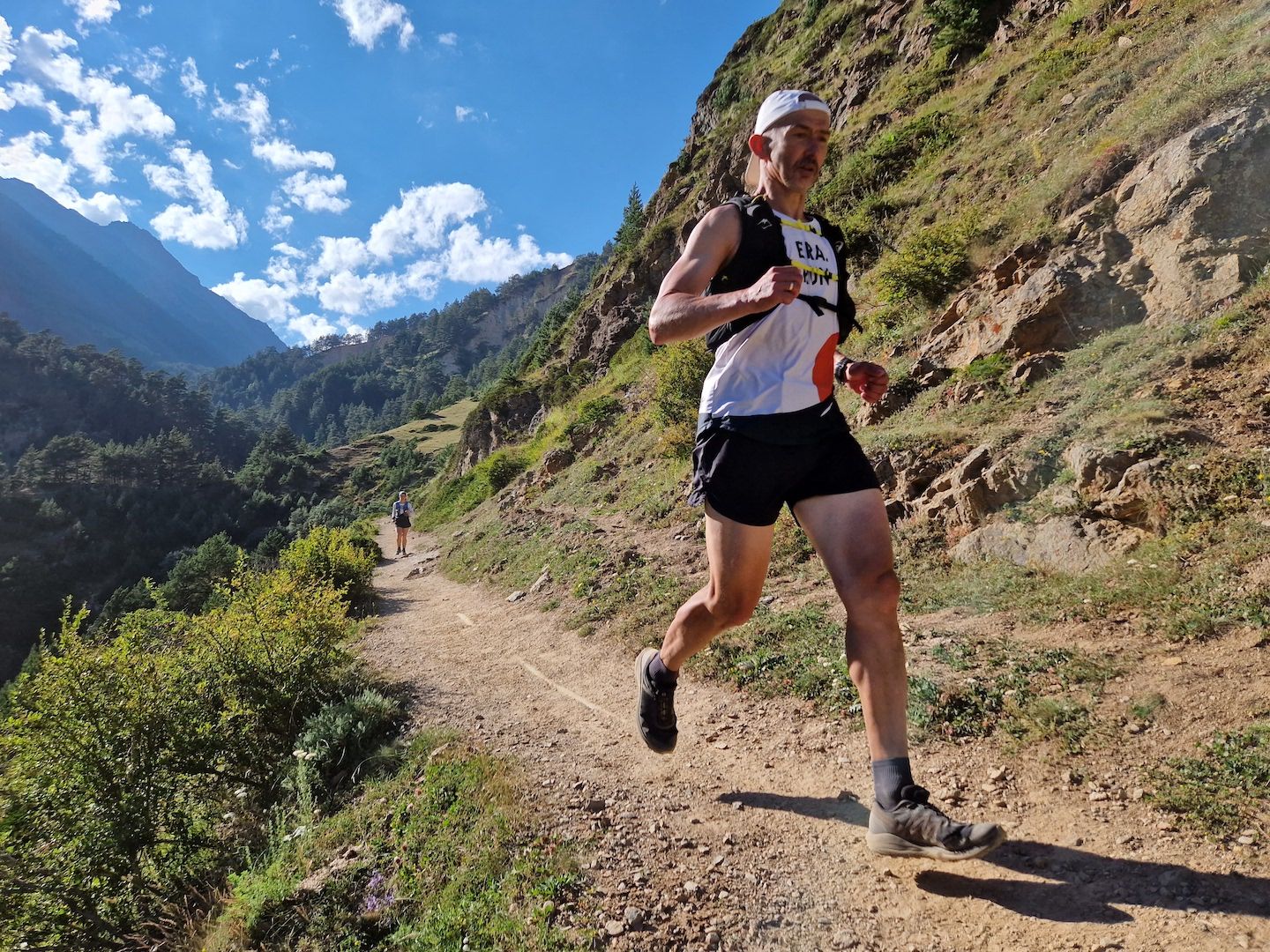
I went on my first trail in the spring of 2008, This is a 30-kilometer route through the Maritime Alps with a start and finish in a small French village near Marseille. Success inspired me, and since then 2-3 times a year I went to the starts, gradually increasing the distance and complexity of the race.
I overcame the first 50 km in 2012, and in the next two years I managed to run 70 and 80 km. Gradually gained experience, formed an understanding of the training process, which is needed for ultra-long distances.
It logically went to a hundred, and in the community they began to openly troll me, they say, I run short races, but I don't dare to go to "real" ultramarathons — more than 100 km.
The first time I decided on the "hundred" in 2014, the Eiger Ultra Trail race in Switzerland, 101 km with start and finish in Grindelwald, at the foot of the northern wall of the Eiger Mountain. This race didn't work out for me — in the middle of the race I was so covered with heat that I had to get off.
Holding a grudge, I returned the following year. The preparation for the race has changed a little — the volumes have grown considerably since spring, in March-April I spent two weeks in Kislovodsk, gaining 115-120 km with relief per week.
As a result, in July 2015, I was again standing at three o'clock in the morning in the starting box in Grindelwald. Was he worried? "no more than usual. Punctual performance of pre-start rituals helps me a lot to cope with anxiety before the start: laying the mandatory equipment and food, preparing clothes and shoes, installing fresh batteries in the lantern.
From the start, all races of this kind are about the same: the track goes along a village street, then turns into a lane between fields, then goes to a path along which cows are driven to mountain pastures, and almost always the first hour of the distance is a continuous climb. Who can, runs, who can't, walks uphill, a long line of people with lanterns from a distance looks like a fiery snake, stretching for one and a half to two kilometers.
It's cool in the morning, the sun starts to get hot a few hours after sunrise, by this time we manage to rise above 2000 m above sea level, there's a breeze and it's not so hot.

The highest point of the Eiger Ultra Trail race, Mount Faulhorn, 2700 m, it takes four hours to run and walk to it. Then a small descent, and then the track goes along trails in alpine meadows with small waves up and down. Sometimes the trail comes close to the edge of the plateau, and you can see the cliff down into the valley with lakes, roads and villages — the pictures are absolutely idyllic.
In the middle of the race, in the village of Burglaunen, I was about 20 minutes earlier than last year, but the heat here was exactly the same. Apparently, the changes in training helped me — and I had the strength to run further, and confidence in success, too.
The most difficult stage was the ascent from Burglaunen up to the other side of the valley. There is a 600-meter climb, the trail winds along a grassy slope without a single tree, and the sun shines almost vertically on this slope.
In this heat, my head gets heavy and my muscles refuse to work, I have to stop and rest. But upstairs, at the food point next to the cable car station, there is a breeze, a food point where you can hide in the shade.
The volunteers who worked there told me later that several people had to be evacuated from there with overheating and dehydration, they themselves could no longer walk.
From that point on, I had no doubt that everything would work out. The heat has subsided, there is strength, it turns out to run along a flat path. To the right along the course is a huge rock wall, 1800 meters of sheer rock, clouds swirl along it, sometimes hiding the view. The trail stretches along the wall, gradually descending to the forest.
Later in the evening it became clear that it would not do without adventures after all: from behind- to the left, because of the Eiger, thunder began to be heard, first far away, then closer and closer.
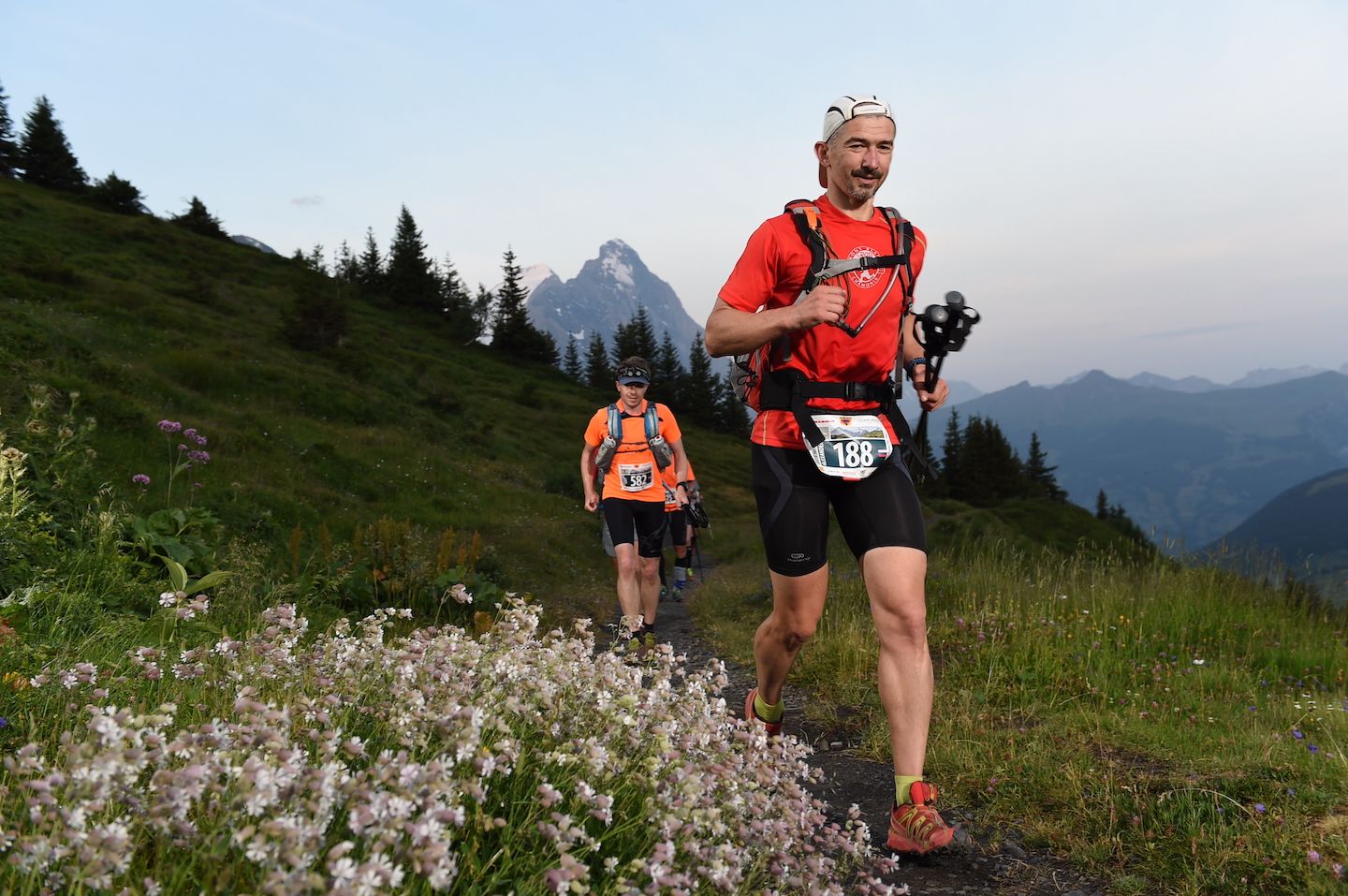
The rain covered me at the entrance to the forest, already at dusk. These were the strongest impressions for the entire race (and for many races in general).
It's completely dark in the forest, the wind is noisy above, heavy rain complements the sound background. The lantern gives a bright spot, you can see the trail, wet trunks, branches and leaves, and raindrops. A flash of lightning — the first time I thought it was a photographer hiding somewhere and shooting with a remote flash - highlights everything for 50 meters around, and a thunderclap is a few seconds late. In the forest, a thunderstorm is not terrible, it is bad for those who found themselves in the open at this time.
Because of a thunderstorm, the race was stopped, and I sat with a dozen more participants for an hour and a half at the next food point.
It was good that I had dry clothes with me, otherwise there was a risk of getting very cold and freezing. When we were released on the track again, at first it was difficult to move, our legs froze, not to run — it was difficult to walk. After about 15 minutes, I managed to go on a run and run the remaining kilometers to the finish. I really wanted — symbolically — to finish on the same day that I started, and this was an additional incentive not to take a step, run, rearrange my unruly legs.
Usually at the finish, fatigue piles up and the whole body hurts — this time it wasn't like that, because a long rest due to a thunderstorm allowed me to recover. But the joy of the fact that the race turned out, that the cherished "weaving" finally succeeded, was no less from this.
What did Eiger Ultra Trail give me? It was the first step into the world of "big" ultra-long distances.
I became confident that I could run really long distances in the mountains, that I understand how to prepare for them (in fact, the secret is small — the volume and intensity of training should correspond to the volume and intensity of work on the race, ideally — you need to prepare for big races in the mountains by running in the mountains).
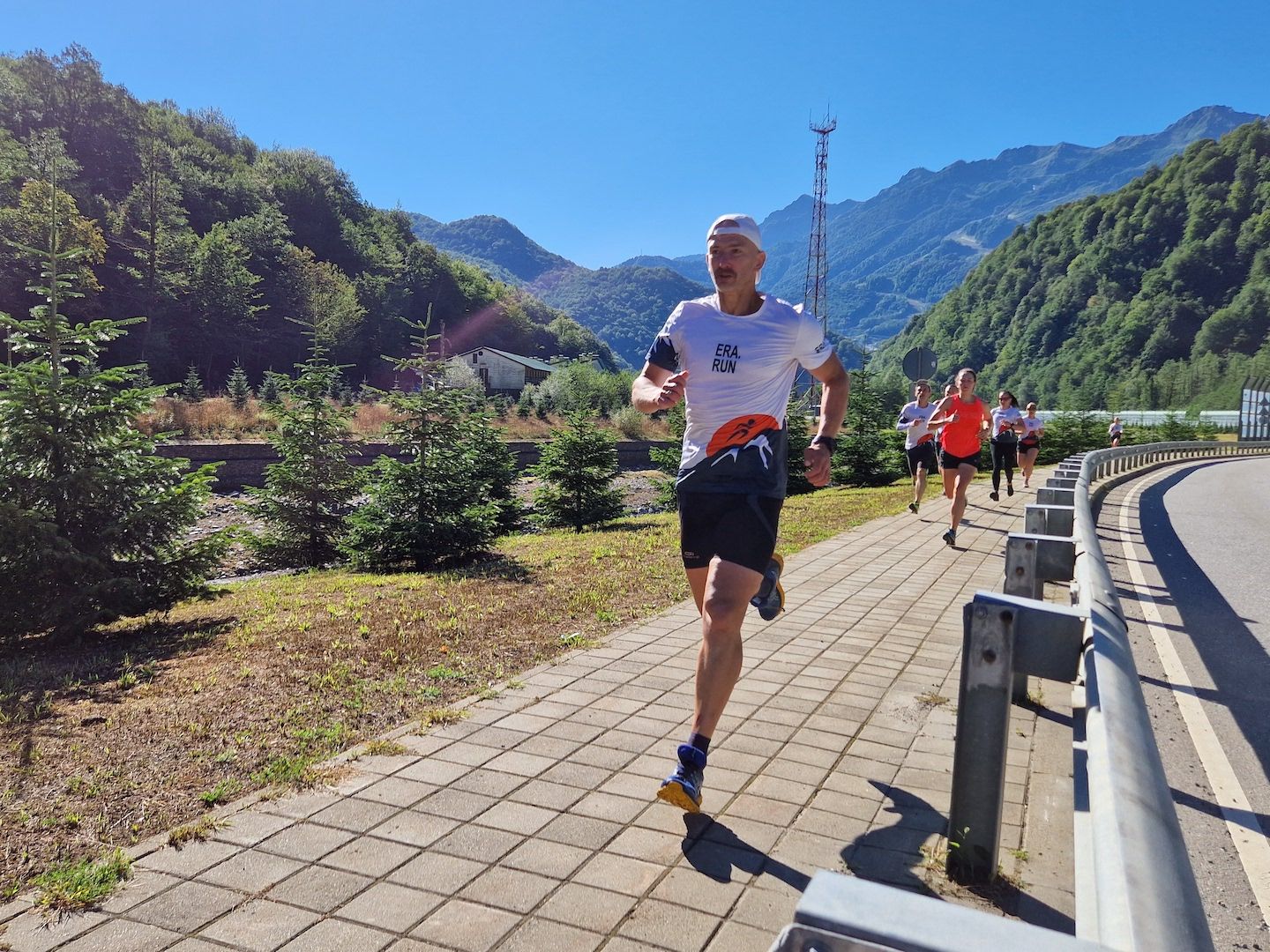
There was an understanding that with the right approach, it is possible to realize almost limitless human capabilities, the only question is a systematic gradual increase in volumes with a specific load (you need to prepare for races in the mountains in the mountains) with sufficient recovery.
It came out once again to confirm to myself that I love mountains, and for the opportunity to spend almost a day at a distance, with the weather that will happen there, under the sun, wind, rain, under the sky with clouds, among rocks, meadows, forests — for all this I am ready to endure in training and endure the race.
The joy of being able to be there and experience these feelings is worth it. Without Iger, I didn't have subsequent big races in 2016-2017, 120 km TDS in France and 163 km MXtreme in Switzerland.
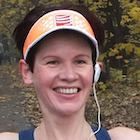
Olga Klenovskaya
runner, ERA Club coordinator, 7th Russian finisher of Six Star Major Marathons
My first 100 km were the first and last for me. I ran the "hundred" only once in my life, on October 12, 2014 (with a result of 11 hours and 8 minutes, the second woman), and I do not advise anyone to run an ultramarathon the way I did.
To begin with, I didn't prepare for the ultramarathon. At that time, I didn't really understand how the training process should be arranged, that there should be recovery, that ideally you should run two marathons a year.
I was just running. I ran the first 42 km in my life on June 24, 2014, in 3:56. And I ran marathons from June to October 2014 almost every week.
Of my 37 marathons, I think I ran the first 15 in 2014, and the rest over the next seven years. My body was probably saved by the fact that I walked from the sofa for the first marathon not for three months, but for four years – since May 2010, when I bought the first running shoes for 990 rubles at Reebok discount. And for the first three years, I increased the distance very gradually. I ran the first 10 and 21 km only in 2013, when, after the pain in my knees, I set myself the right running technique according to the books (I learned not to land on my heel) and suddenly believed that with a new running technique I could do anything – and indeed I could.
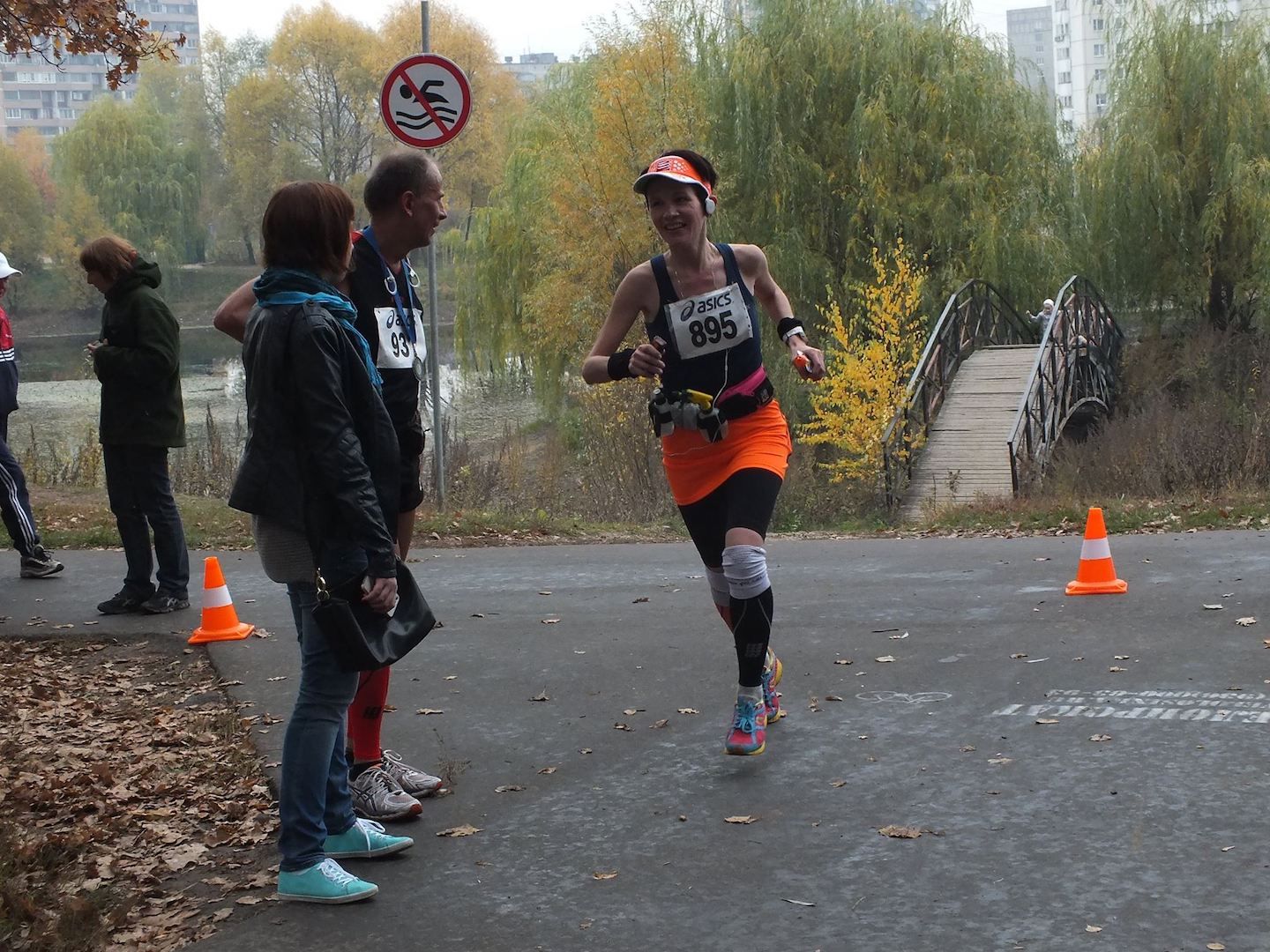
The first (and last) hundred in my life I ran in a T-shirt with the inscription "Dementia and courage". It is impossible to express more precisely my motivation and the degree of understanding of what I got involved in.
Perhaps the only rational grain that was present in my decisions to run the first marathon, and then the first "hundred", was that these races were then arranged very close to my house (in Izmailovsky Park and Losiny Ostrov). I told myself that even if I get really sick at the distance, I can always come home.
During the summer of 2014, I ran several marathons and once – 50 km, and half of them in the same forest – in Moose Island. I won't say that I was worried at the start – the same forest, the same people around. In 2014, a running party developed at Dmitry Erokhin's marathons, he organized races every week in different parks in Moscow, and almost the same athletes came there. It is noteworthy that we continue to communicate with many of them today. Yerokhina, a volunteer at marathons, became my best friend, and one of the regular participants became my coach, and then my husband.
I reasoned like this: I've already run 50 km and I'm not particularly tired. And here you need to run 50 twice.
The track was also very soothing — five times with a pendulum: 10 km to the farthest point and 10 back, a total of 100. We started from the Golyanovsky cemetery, the U–turn is at the Metro Town. That is, I had the opportunity to get off every 20 km. And it was necessary to run on flat asphalt.
For trailrunners, of course, this track is the most boring of the most boring: a bicycle road, a forest or a clearing with a power line on the sides, no beautiful or at least diverse views for you. The only joy: at the seventh kilometer, I saw and photographed a live moose for the first time.

And right from the start, I started making mistakes.
It all started with the fact that, after choosing between many sneakers for a long time, I stopped at the Newton popular in those years – they have a negative drop from toe to heel (the sole on the heel is thinner than on the toe). But my Newton Graviti performed so well at 50 km that I decided that this was a proven option, and I was wrong.
After 50 km, I didn't have the strength to land correctly on the middle of the foot, I wanted to smack on the heel, and there was no heel.
And if my friend hadn't brought me another pair of sneakers urgently, I would definitely have left the race after 80 km.
Secondly, I ran for 5:30 minutes per kilometer, which was the second catastrophic mistake, but, however, it was a consequence of the first: it is impossible to run slowly in Newton, I want to immediately lift my foot off the ground.
At that time I was running a marathon at that pace, and I should have run slower right away, knowing what was ahead. Already well-known at that time in Moscow and experienced ultramarathon Evgenia Rumyantseva immediately said: "Too fast." It wasn't the first "hundred" for her, she knew what she was talking about, but she still stayed close to me and as a result she got off– I don't know how many laps later. And I stayed and was in the lead for a while. But at the 60th kilometer, I was already running at 6:10, still hoping, however, to keep within 10 hours.
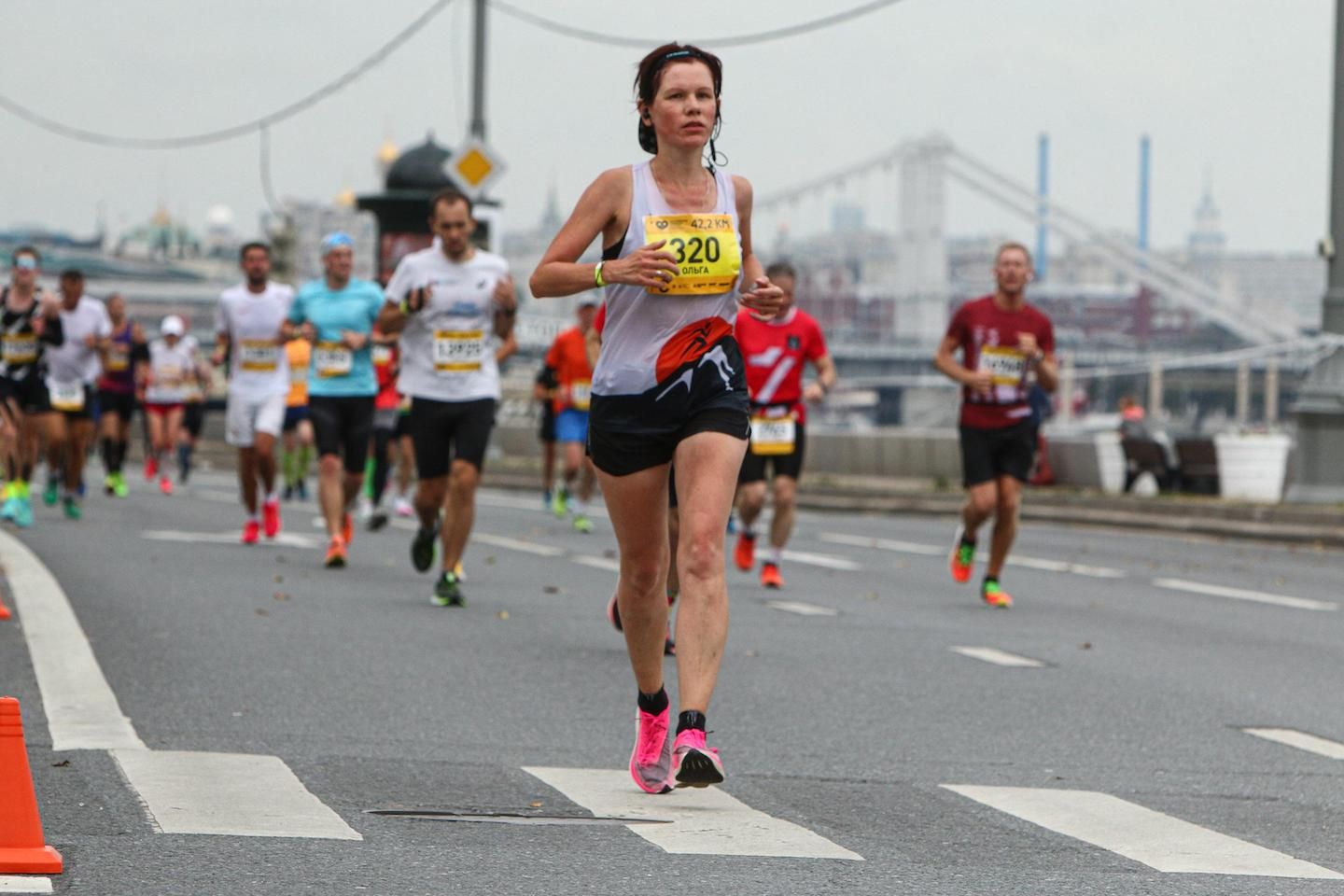
Everything went more or less normally for the first three laps of 20 km. I ran, listened to the opera with headphones – as it turned out, 4.5 operas fit in 100 km: "Rigoletto", "La Traviata", "Faust", "Aida", "Troubadour". And at the 70th kilometer I caught the "wall", the first marathon wall in my life. This is when you can no longer lift your legs and running itself seems pointless to you, you want to sit on the ground and cry.
In my case, the situation was aggravated by rain and a sharp cold snap – I ran in a T-shirt and sleeves, thoughtlessly throwing a windbreaker after 20 km.
From the impressions of that day, I remember most of all how soon after the fourth U-turn (that is, 73-75 km) I suddenly didn't understand why I was here.
I got off the asphalt into the bushes, wandered through them for a while and cried.
It was raining, it was getting cold. My head turned off – I felt insanely sorry for myself, I wanted to go home, but for this I had to run or walk, and at least crawl another 7 km to the starting point – and at that moment overcoming 7 km seemed impossible. But, since my brain turned off, the idea of leaving the forest from the other side — where the U—turn is - and coming home by taxi did not occur to me either.
I don't remember how I got back on the asphalt and didn't run – I went! – to the start, he's the finish. I was overtaken, encouraged, but I didn't care.
It was good that there was a bag with my things at the finish line, from where I took out a windbreaker and went to the last, fifth lap. Why didn't she come down? Between 75 and 80 km, fog descended along with twilight, and the sensations became completely surreal – you move as if in gray milk, asphalt is your only salvation under you.
I remembered that I had a flashlight with me all this time, and turned it on. And this personal spot of light on the asphalt in front of me saved me. I imagined myself as a snail, as if I had my own house with me, which protects me in the dark and fog. Consciousness returned to me, I regained, if not strength, then at least motivation to run.
So, mistake number three – when you run all day, you need to study the weather forecast until the evening and take clothes with you to the track for all temperature options. I'm sure if I had approached the choice of clothes and shoes more intelligently, I would have won 15 minutes.
After 100 km, I didn't feel anything at all, except cold. I was shaking terribly, my teeth were chattering, I couldn't walk.
I barely made it to the bus stop. The minibus seemed to me a branch of heaven on earth – it was warm, dry and she drove me home. It turns out that after 100 km running, walking another 2.5 becomes an impossible task.
I was completely indifferent to my time and place in the protocol, I wanted only one thing – under a hot shower and under a blanket.
My sufferings at the First Moscow Hundred (as that race was officially called) were rewarded five years later, when my husband, Alexander Elkonin, proposed to me at the finish of the Moscow Marathon.
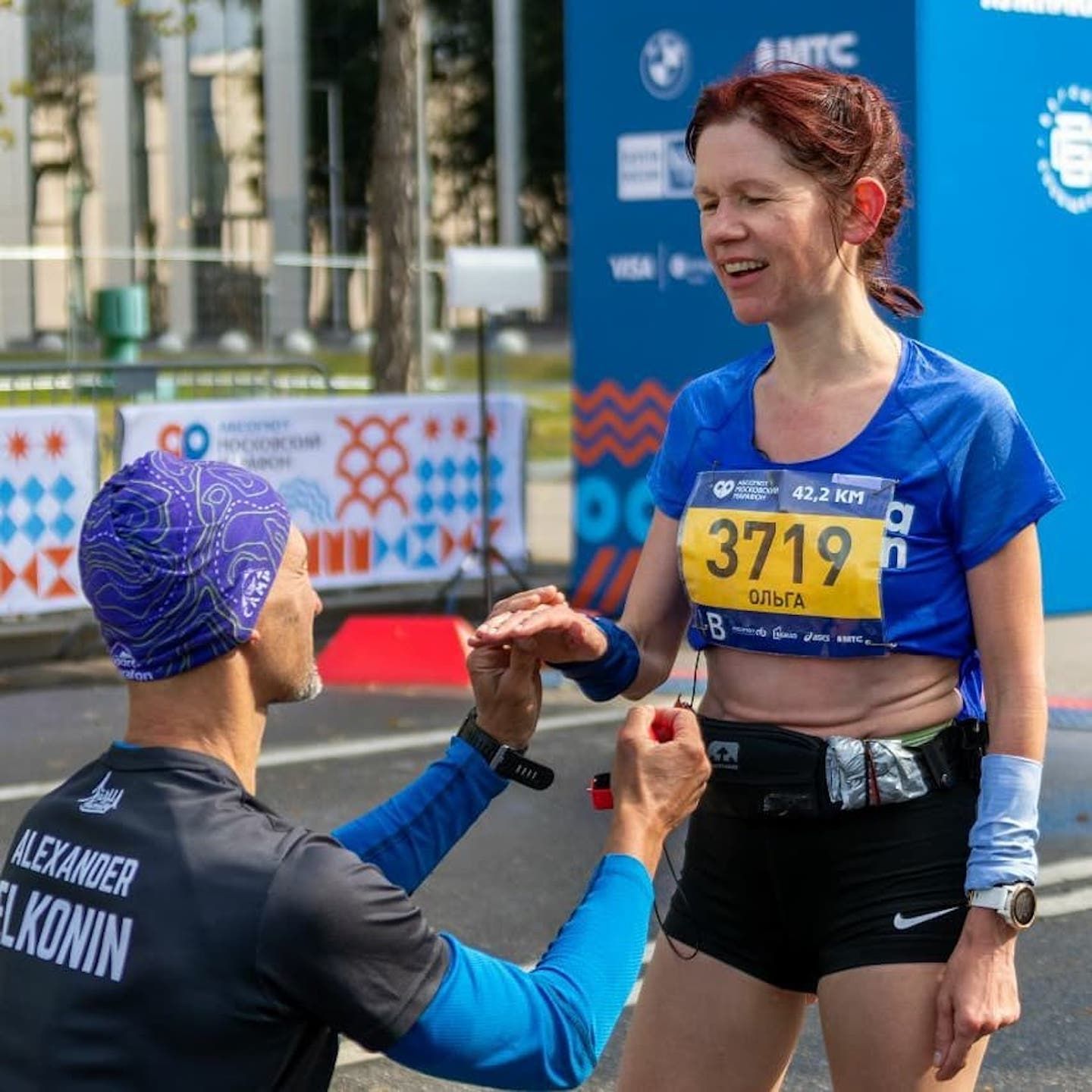
And, apparently, the most significant moment in October of the distant 2014 was a small talk at the start, when people asked each other who was running how much, at what pace.
There were only four girls who started a hundred, and we were immediately singled out and respected right in the morning. Alexander ran a training "ten" and just at that time was in a state of retraining from the head of the Johnson & Johnson department to a coach, on which occasion he gave right and left advice on how to run (and, I note, he was very successful in this occupation over the next eight years).
That's how we met. A year later, I sent my friend to Alexander as an apprentice, evaluated the result (positive), and in 2017, after unsuccessfully running the Boston Marathon, I came to train with Alexander myself.
But in general, my path to Alexander consisted of continuous trials and overcoming, as in a classic fairy tale by Propp. First, under the guidance of Alexander, I ran a marathon of 3:15 (1st category), after 10 months of training - of three hours (CMS), then collected six medals of Six Star Major Marathons and at the London Marathon in April 2019 I received the seventh – the very "gear".
And only after such a long chain of events in the summer of 2019, Alexander had a reason to come to me with a gift – a medal of Major Marathons — and as a result stay with me – I hope for the rest of my life.
It's easier to say what mistake I didn't make on my "hundred": for some reason I guessed to take a flashlight. It was very useful from the 80th to the 100th kilometers: after the 95th there was no sign of anything, including the clock, which by that time should have been half past seven.
I have already mentioned three mistakes – incorrectly chosen shoes, too fast start and wrong clothes.
But you need to start with the fact that you need to be brought to 100 km gradually. After the marathon, run 50, then 80 and only then, assessing your condition and the reaction of the body, go to the "hundred". Doubling the distance in one jump is a dangerous idea.
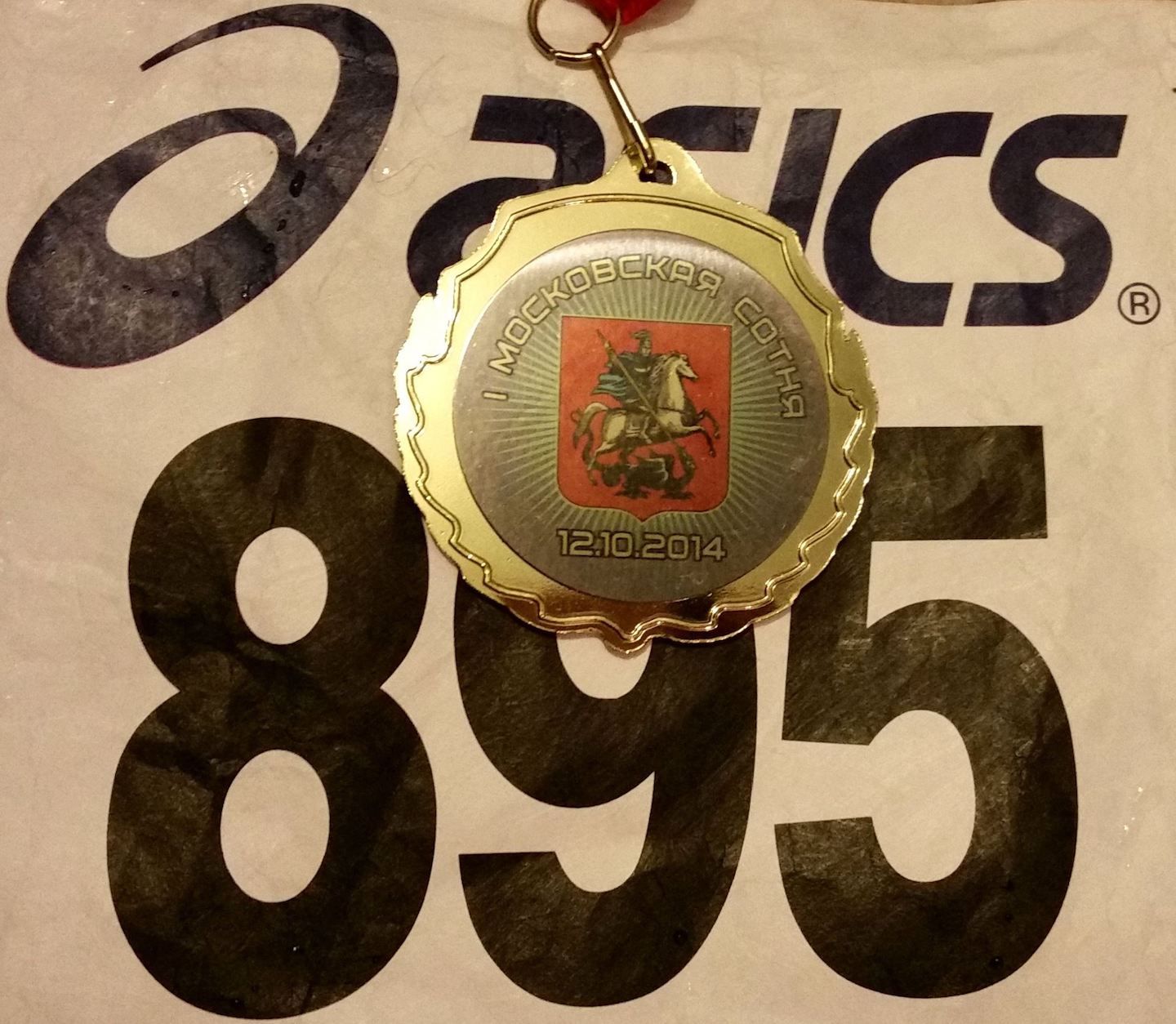
I felt so bad at the finish line and the next two weeks after it that I never tried to run longer distances than a marathon again. And in hindsight, I realize that I was lucky that I didn't get injured.
More about shoes: as a rule, at ultramarathons, the organizers provide an opportunity to make a "drop-in", that is, at a certain point of nutrition, an athlete is waiting for a bag where he has put a change of clothes, shoes, food, plasters in advance. And ultramarathoners always put a second pair of sneakers larger than the first in the "throw", since the leg swells from running for a long time and it becomes cramped in the morning sneaker.
Now I always bring spare sneakers to any race, sometimes even two pairs. In some you get to the start, in others you run, at the finish you change your shoes again. Twice it happened to run in the rain, and by the finish line both the first and second pair of sneakers were wet, then the third pair just saved.
Also with clothes: before the race, carefully study the weather forecast, and not only at the start hour, but for the entire time that you will run. At the start of the "Moscow Hundred" it was plus 20 and the sun, and at the finish – plus 5, rain and night. In addition, at the finish of any race, even at 5 km, you need to have a full set of dry and warm clothes, including underwear. On the run you will lose a lot of energy, you will shiver, so two extra warm layers after the finish are absolutely necessary.
I had no problems with food for 100 km: I ate my gels and bread with watermelons, which was given at the catering points by the organizers. But this is luck. Often ultramarathoners are faced with the fact that the stomach refuses to accept food. Therefore, test yourself in the intermediate races: what are you able to eat after 50 or 80 km?
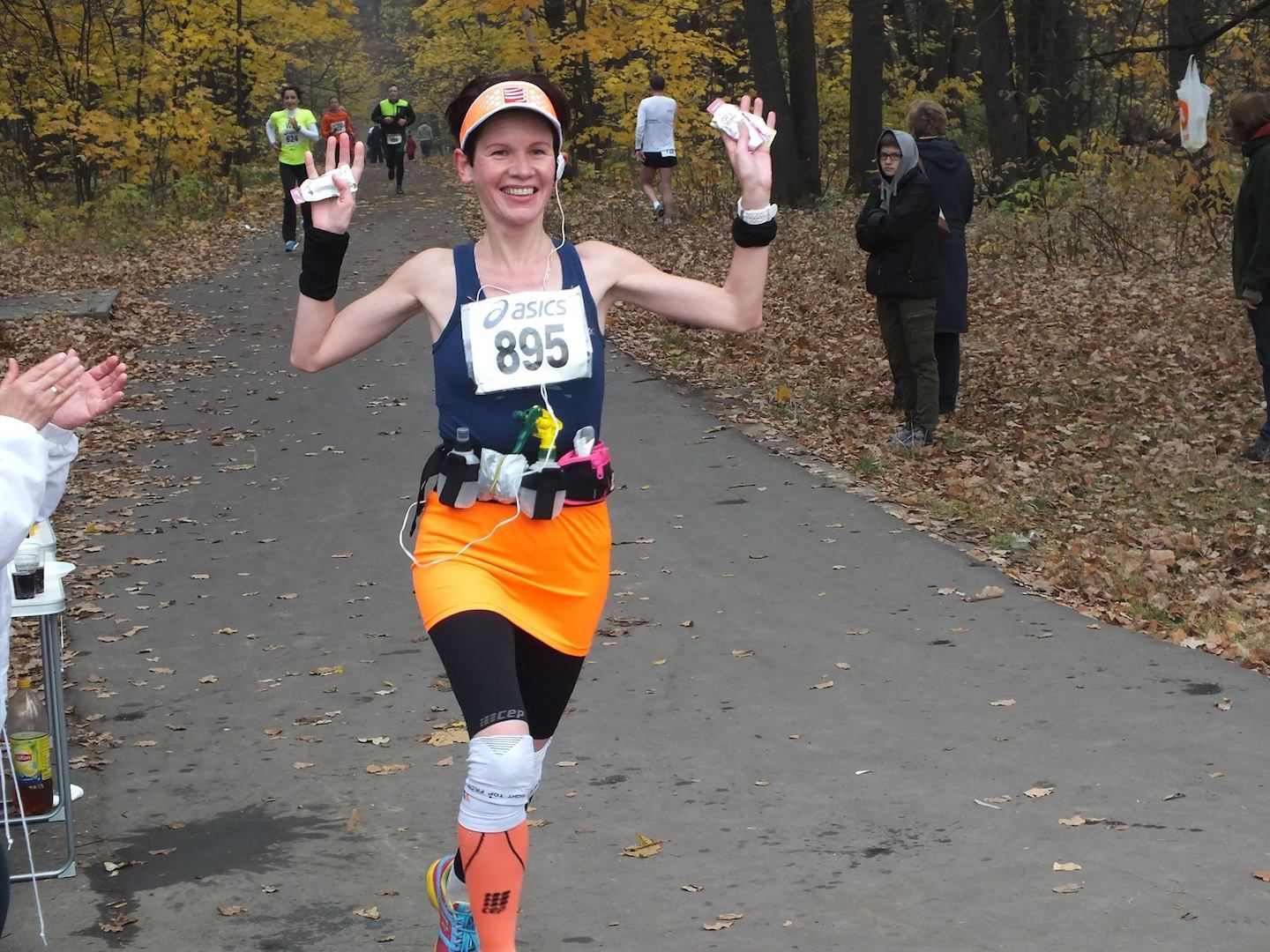
Important tips from ultramarathoners
- To go to a distance of 100 km not earlier than a year after overcoming the marathon. Between 42 and 100 run, for example, 50 and 80. After passing each next distance, analyze your mistakes and your feelings, take them into account at the next race.
- Plan the race in great detail, run it in your head before going to the start. To find on the Internet the reports of those who have already run specifically these competitions or similar, to study. Carefully study the map, elevation differences. Calculate at what time you will be at each point, imagine whether it will be dark at this time, or wet with dew, or, conversely, hot and there is no shadow around. Think about what kind of clothes and shoes you will need, whether you need to carry it on yourself or there will be a "drop-off", how much to take food and water.
- Be sure to think about how and where you can get off. Take money for a taxi with you and write down where the points are, from where you can call this taxi. Remember that your head may turn off, you will not control yourself, and in this case you need to have a written plan B with you.
- In any case, do not neglect the list of mandatory equipment from the organizers, if there is one. It is better to have an excess supply of clothing and food than to freeze, starve, lose the ability to move and get sick or injured as a result.
Alexander tells all this to his students, and they successfully finish both 100 and 120 km. Perhaps if I had run my first hundred under his guidance, I would have loved this distance. But, apparently, in my destiny, the "hundred" was needed only in order to meet her future husband for the first time.
Source: championat
Follow us on в Telegram















